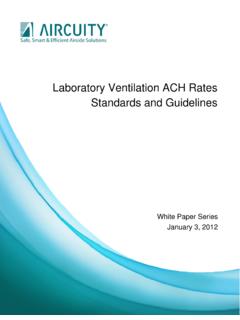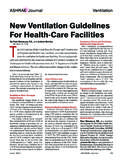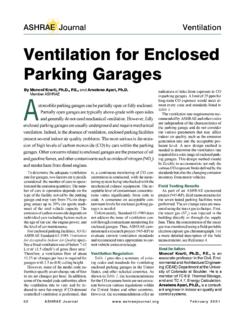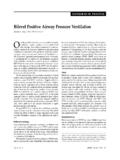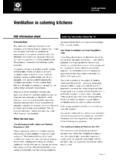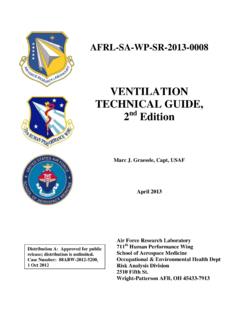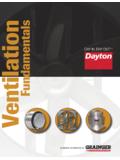Transcription of Natural Ventilation for Infection Control in Health …
1 WHO Publication/GuidelinesNatural Ventilation for Infection Control in Health -Care SettingsEdited by:James Atkinson, Yves Chartier,Carmen L cia Pessoa-Silva, Paul Jensen, Yuguo Liand Wing-Hong SetoWHO Library Cataloguing-in-Publication Data: Natural Ventilation for Infection Control in Health -care Ventilation methods. 2. Air microbiology. 3. Infection Control . 4. Health facilities standards. 5. Guidelines. I. World Health 978 92 4 154785 7 (NLM classification:WX 167) World Health Organization 2009 All rights reserved. Publications of the World Health Organization can be obtained from WHO Press, World Health Organization, 20 Avenue Appia, 1211 Geneva 27, Switzerland (tel.)
2 : +41 22 791 3264; fax: +41 22 791 4857; e-mail: Requests for permission to reproduce or translate WHO publications whether for sale or for non-commercial distribution should be addressed to WHO Press, at the above address (fax: +41 22 791 4806; e-mail: The designations employed and the presentation of the material in this publication do not imply the expression of any opinion whatsoever on the part of the World Health Organization concerning the legal status of any country, territory, city or area or of its authorities, or concerning the delimitation of its frontiers or boundaries.)
3 Dotted lines on maps represent approximate border lines for which there may not yet be full mention of specific companies or of certain manufacturers products does not imply that they are endorsed or recommended by the World Health Organization in preference to others of a similar nature that are not mentioned. Errors and omissions excepted, the names of proprietary products are distinguished by initial capital reasonable precautions have been taken by the World Health Organization to verify the information contained in this publication. However, the published material is being distributed without warranty of any kind, either expressed or implied.
4 The responsibility for the interpretation and use of the material lies with the reader. In no event shall the World Health Organization be liable for damages arising from its use. The named authors alone are responsible for the views expressed in this cover photographs show Health -care facilities in (from top to bottom) Myanmar, South Africa, Peru, Nepal, Hong Kong SAR and designed by Design ONE, Canberra, AustraliaProduction and design by Biotext, CanberraiiiC o n t e n t sForeword ..ixAcknowledgments ..xiContributors ..xiiiConflicts of interest ..xviiExecutive summary ..xixAcronyms and definitions of terms.
5 XxiiiPart 1 Infection Control and Ventilation ..11 General principles of Infection The concept of isolation precaution and an historical review .. Isolation practices for Infection Control .. Isolation practices for airborne infections .. Infection Control for high-risk procedures .. Summary ..62 Concepts and types of Ventilation .. Ventilation .. What is Natural Ventilation ? .. What is mechanical Ventilation ? .. What is hybrid or mixed-mode Ventilation ? .. Assessing Ventilation performance .. Comparison of mechanical and Natural Ventilation .. Mechanical Ventilation .
6 Natural Ventilation .. Mechanical versus Natural Ventilation for Infection Control .. Summary ..15iv Natural Ventilation for Infection Control in Health -Care Settings3 Infection and Ventilation .. The association between Ventilation and Infection .. Ventilation requirements relating to airborne Infection Control .. World Health Organization recommendations relating to Natural Ventilation requirements .. Explanation of the World Health Organization recommendations .. Review and assessment of recommendations .. Summary ..24 Part 2 Designing for Natural Ventilation ..254 Understanding Natural Ventilation .
7 The driving forces of Natural Ventilation .. Wind pressure .. Stack (or buoyancy) pressure .. Ventilation flow rate ..305 Design and operation .. Designs for Natural Ventilation and hybrid Ventilation systems .. Natural Ventilation systems .. Hybrid (mixed-mode) Ventilation systems .. Basic design concepts for Natural Ventilation .. Climatic and other considerations in Ventilation design .. Maintaining thermal comfort .. Considerations for hot summers .. Considerations for winter .. Maintaining healthy indoor air quality .. Managing ambient air pollution .. External noise.
8 Selecting low-emission interior materials .. Humidity and mould growth .. Security and vector-borne disease spread .. High-rise considerations .. Fire safety considerations ..39 Designing for Natural and hybrid Ventilation systems .. Vent sizing .. Three major design elements of Natural Ventilation .. Types of Natural Ventilation systems .. Single-side corridor type .. Central corridor type .. Courtyard type .. Wind tower type .. Atrium and chimney type .. Hybrid (mixed-mode) Ventilation type .. Applicability of Natural Ventilation systems .. Commissioning, operation and maintenance.
9 Commissioning .. Operation and maintenance .. Summary ..53 References ..55 Annexes ..63 Annex A Articles included in the systematic review on the association between Ventilation and Infection ..65 Annex B Recommendation GRADE appraisal tables (GRADE system) ..71 Annex C Respiratory droplets ..77 Annex D Basic concept of Ventilation flow rate ..83 Annex E Rationale for determining the minimum Ventilation rate requirements ..87 Annex F Natural Ventilation example I: Hospital Nacional Dos de Mayo, Lima, Peru ..89 Annex G Natural Ventilation example II: Grantham Hospital, Hong Kong SAR, China.
10 95 Annex H Natural Ventilation example III: Tuberculosis Control Unit, Tan Tock Seng Hospital, Singapore ..101 Annex I Natural Ventilation example IV: IOM Isolation Centre, Damak, Nepal ..105vi Natural Ventilation for Infection Control in Health -Care SettingsTa b l e sTable Summary of advantages and disadvantages of different types of Ventilation systems for hospitals ..12 Table The scope and definitions of three transmission models for the systematic review ..18 Table Estimated air changes per hour and Ventilation rate for a 7 m 6 m 3 m ward ..30 Table Potential applicability of Natural Ventilation solutions in ideal conditions (consensus of a WHO systematic review).










